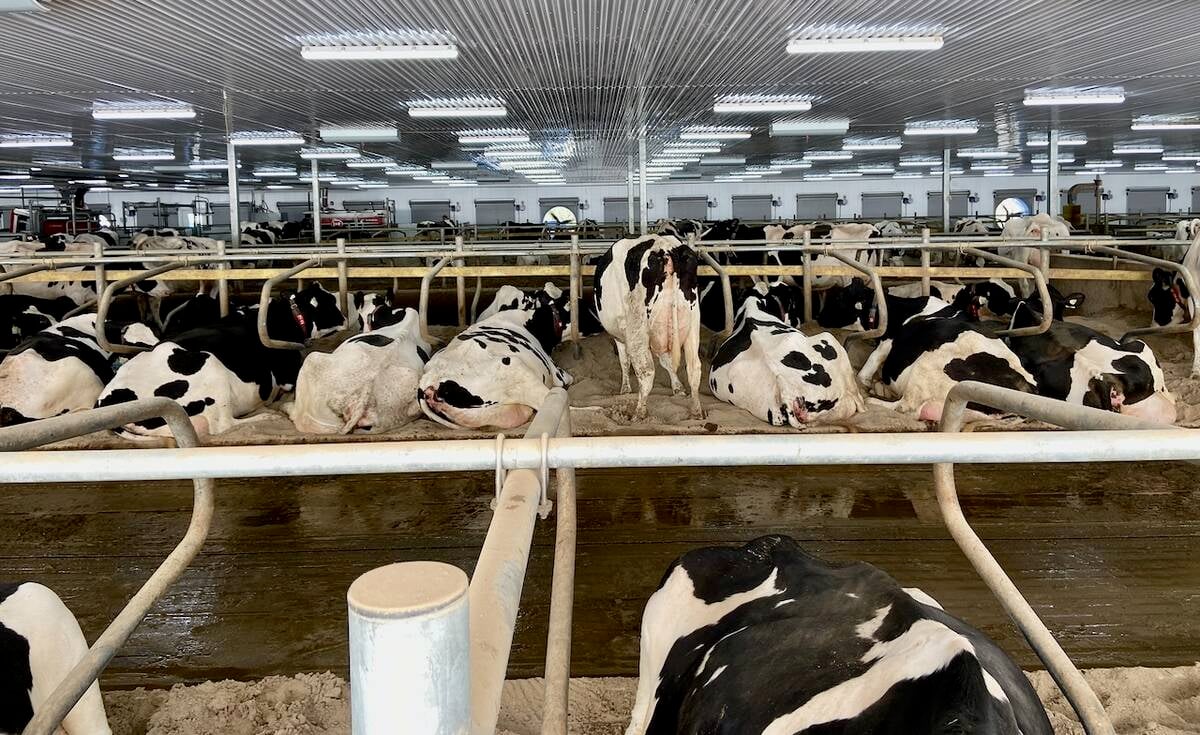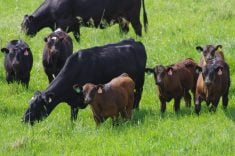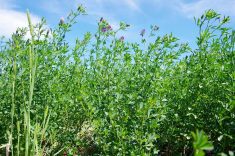Within sight of the grey dome of the old Brandon Mental Health Centre lies a field with leafy spurge so thick that, in the summer months, it looked like a field of flowering canola.
But further up the hill, the noxious weed infestation tapers off, giving way to lush grass.
Why?
Credit a new “feed and weed” strategy that shows promise in countering the scourge of spurge.
Here in the winter of 2008, researchers from Agriculture and Agri-Food Canada conducted a site management trial in which 60 cow-calf pairs were fed 300 hay bales in two repetitions on a 10-acre section of the field with light Class 5 soil.
Read Also

Lactanet moves to monthly on dairy genetic reports
Lactanet is now publishing monthly dairy genetic evaluations, giving dairy farmers more up-to-date data to make breeding decisions.
Aggressive, sod-forming grasses such as brome soaked up the nutrients from the manure left behind and “really took off,” research technician Clayton Robins said during a tour of the site last week. The grass was so thick that in early June of this year, they got almost two weeks’ worth of grazing with 100 cow-calf pairs under a high-intensity mob grazing strategy.
When the spurge came up in the early summer, it was sprayed with 2,4-D. The weeds were then given a follow-up blast in the fall of Grazon, a pasture herbicide that contains a small amount of picloram.
It’s the combination of enriching the soil with manure, intensive grazing, and timely herbicide applications that appears to have defeated the spurge.
Researchers believe part of reason is something called the “metabolic sink” effect – using fertility to make a plant more susceptible to herbicides.
“When you looked at the leaf shape and colour of the plants outside the feeding area, they were typical spurge leaves: long, pointed, narrow, pale green,” said Robins.
“But in here, they were a half-inch wide, with rounded leaves as dark green as a fir tree.”
The theory is that a flush of nutrients prompts plants to send out fresh, tender new leaves. That makes them easier to kill than their stringier neighbours, whose tougher, waxier leaves resist absorption of the herbicide.
Mob grazing also appears to have played a role. Highintensity grazing forced the cattle to eat spurge regrowth the following year. The cows were more willing to do that because the young plants contained less of the milky latex that makes spurge unpalatable.
Then, when the pasture grew back during the rest period, the elevated fertility made it easier for fast-growing grass species to gain a competitive upper hand.
“You can make the species that you want to have there a lot more healthy under proper management, and then use a timely herbicide or cultural application on problem weeds after the fact,” said Robins.
“If you can beat them back at the right time, your good species are going to help take over the area.”
The results from the demonstration site are interesting, but a lack of resources has prevented more in-depth study and therefore they cannot be considered “real science” at this point, he added. Also, there are some small remnant areas of leafy spurge that cannot be explained.
“There are plants that are escaping, so that means that we haven’t got it solved yet,” he said. “But it is encouraging enough that we know it’s worth pursuing.”
LEAVES FIRST
Adding other ruminants, such as sheep and goats, into the mix could also help, added Robins, who used to custom-graze spurge with a sheep flock.
Goats can tolerate a diet of up to 80 per cent leafy spurge without upsetting their digestive systems. For sheep, that figure is around 50 per cent.
“Sheep and goats will strip the leaves off the stems – the leaves don’t have a lot of the latex that has the off flavour,” said Robins.
They also carefully nip off the top of the spurge plant, where the fluid tends to be clearer. Eventually, the browsers will delicately work their way down until the plant is gone. Previous studies show that under continuous grazing, small ruminants can clear 95 per cent of the spurge from a pasture in five years, he added.
“If they had a million sheep in Manitoba, we’d have it covered,” he joked. [email protected]
———
“Youcanmakethespeciesthatyouwant tohavetherealotmorehealthyunder propermanagement,andthenusea timelyherbicideorculturalapplication onproblemweedsafterthefact.”
– CLAYTON ROBINS, AAFC BRANDON














